




| Lucerne Bug (Adelphocoris lineolatus (Goeze, 1778)) |





|
|
Scientific name: Adelphocoris lineolatus (Goeze, 1778) Common name: Lucerne Bug Other names: Alfalfa Plant Bug French name: Capside des légumineuses, Capside de la luzerne. Order: Heteroptera Family: Miridae Wingspan : 7.5 to 10 mm long, 3 mm wide. Biotope: Meadows, cultivated fields on various leguminous plants on which this bug feeds. Geographic area: Palaearctic region from western Europe to Japan, North Africa. Introduced to the United States of America. Observation period : July to October. |
Adelphocoris lineolatus is a lengthy bug with a general greyish green or greyish yellow ground colour. The head is wider than long. The antennae are slightly shorter than the body. The pronotum is a uniform colour and can show two or four dark spots. The scutellum shows two dark brown strokes. The hemelytra are covered with short white hairs. You can tell it apart among other similar species with the spines on the hind leg tibia being equal or longer than the tibial width and with the cuneus being pale white. Closterotomus norwegicus, which always shows two dark spots on the pronotum, has shorter spines on the hind leg tibia. They are shorter than the tibial width. The second article of the antennae is longer, slightly equal to the total length of article 3 plus article 4. Adelphocoris quadripunctatus, which shows four dark spots on the pronotum, not always well marked and sometimes missing, is characterized by blackish hairs. In fact there is a double pilosity with black hairs and white hairs. Adelphocoris lineolatus is considered as a pest for Lucerne fields. |
| [To know more about the Lucerne Bug] [Next picture] [Top] |
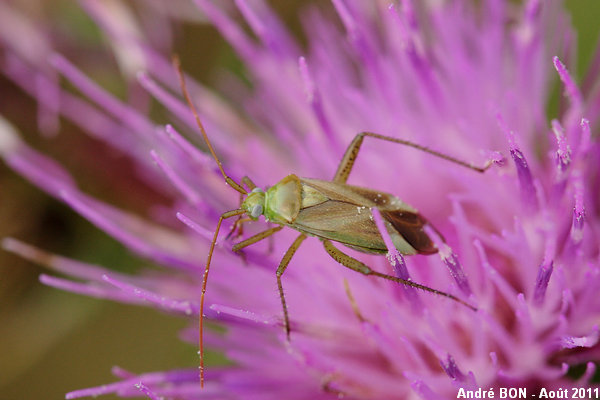
|
The long spines on the tibia and the white hairs on the hemelytra indicate Adelphocoris lineolatus. |
| [To know more about the Lucerne Bug] [Next picture] [Previous picture] [Top] |
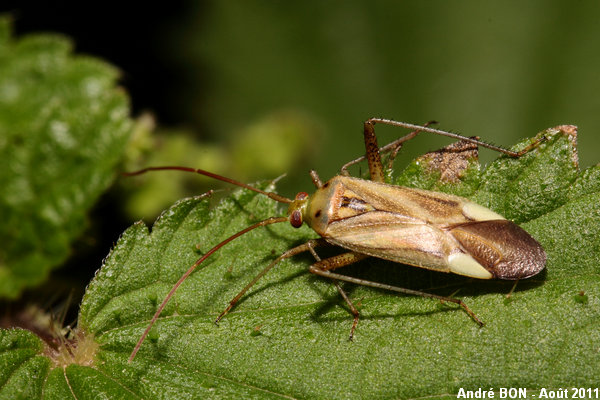
|
I had a close look at the non-reduced picture, I cannot see any black hairs on the hemelytra. So I can tell again this one apart as Adelphocoris lineolatus. |
| [To know more about the Lucerne Bug] [Next picture] [Previous picture] [Top] |
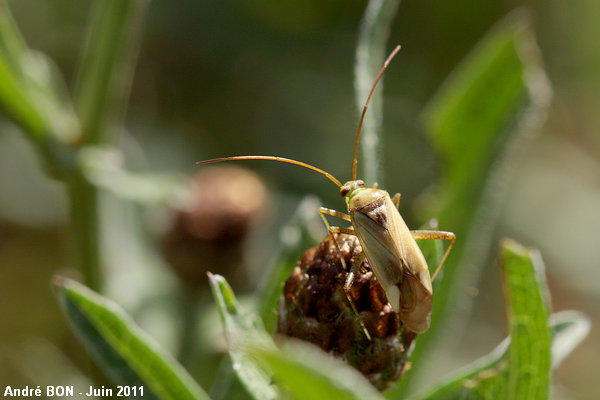
|
The hemelytra are here covered with white hairs. The cunei are pale white. The spines on the hind leg tibia (visible on the non-reduced picture and only on the left tibia, the picture is blurred on the right tibia) are longer than the tibial width. The second article of the antennae is about the same length as the total length of article three plus article four. |
| [To know more about the Lucerne Bug] [Next picture] [Previous picture] [Top] |
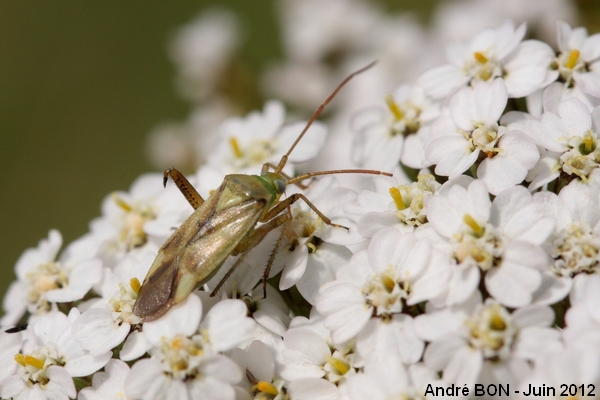
|
You can clearly see the spines on the hind tibia here. This bug has been amputated part of his left hind leg and the tip of its right antenna. |
| [To know more about the Lucerne Bug] [Previous picture] [Top] |
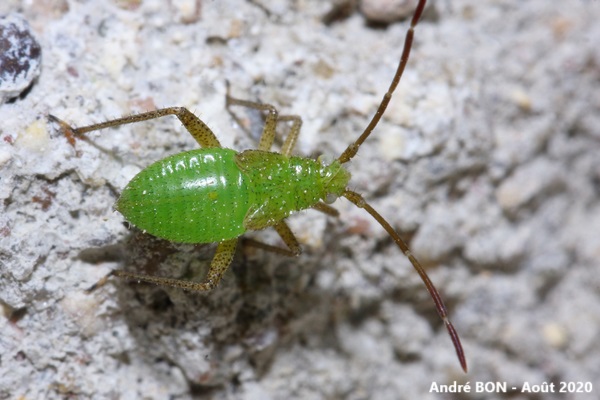
|
Here is a juvenile. While trying to take a very close-up photo, I neglected the framing a little and one of the antennae was cut off. |